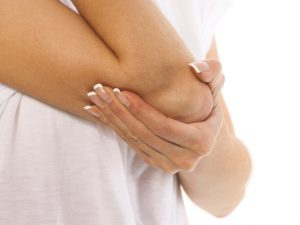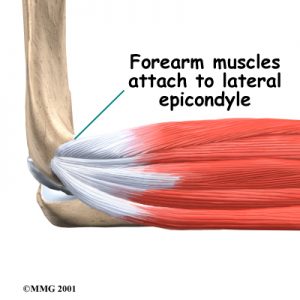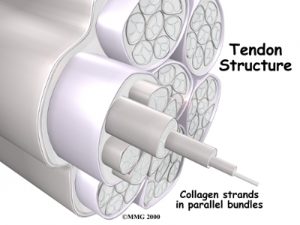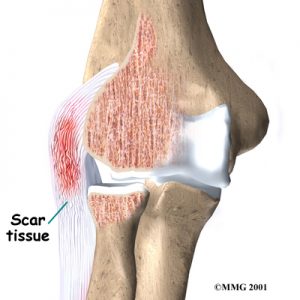Elbow Pain
Kettering Osteopath can help with Elbow Pain
Osteopathy for Elbow Pain
Pain in the elbow is often due to two main conditions – tennis elbow and golfers elbow.
Tennis elbow causes pain and tenderness around the outside of the elbow joint, whereas golfer’s elbow causes pain around the inner side of the joint.
Tennis elbow is more common than golfers elbow and both are injuries from repetitive overuse or wear and tear from any hobby, sport or activity not just tennis or golf as the name implies. Sometimes a single injury such as a sudden unexpected tug on the forearm can cause the symptoms.
Once the pain starts, your normal activities and habits can maintain the problem.
Pre-existing problems with your neck, wrist or shoulder, that might not be painful in themselves, can make it more likely for you to suffer with tennis or golfers elbow. Most cases ease naturally eventually but many people seek treatment and advice from an osteopath.
How can an osteopath help with Tennis elbow and Golfers elbow?
- We can use a variety of different massage and manipulation techniques to try to ease your symptoms, get to the cause of the problem and get you back to your normal life style. We may gently manipulate the elbow, wrist, neck and upper back joints.
- We may offer you advice on which activities and movements to avoid, advice on specific exercise and advice an appropriate elbow brace support or sports strapping.
- We may suggest you see your GP for advice about pain medication or anti-inflammatories or refer you to them for further investigations.
Kettering Osteopath can help with Elbow Pain
Tennis Elbow
Introduction
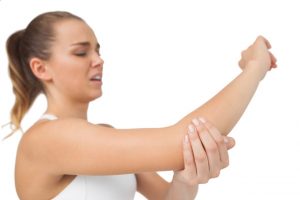
Lateral epicondylitis, commonly known as tennis elbow, is not limited to tennis players. The backhand swing in tennis can strain the muscles and tendons of the elbow in a way that leads to tennis elbow. But many other types of repetitive activities can also lead to tennis elbow: painting with a brush or roller, running a chain saw, and using many types of hand tools. Any activities that repeatedly stress the same forearm muscles can cause symptoms of tennis elbow.
Anatomy
Tennis elbow causes pain that starts on the outside bump of the elbow, the lateral epicondyle. The forearm muscles that bend the wrist back (the extensors) attach on the lateral epicondyle and are connected by a single tendon. Tendons connect muscles to bone.
Tendons are made up of strands of a material called collagen. The collagen strands are lined up in bundles next to each other.
Because the collagen strands in tendons are lined up, tendons have high tensile strength. This means they can withstand high forces that pull on both ends of the tendon. When muscles work, they pull on one end of the tendon. The other end of the tendon pulls on the bone, causing the bone to move.
When you bend your wrist back or grip with your hand, the wrist extensor muscles contract. The contracting muscles pull on the extensor tendon. The forces that pull on these tendons can build when you grip things, hit a tennis ball in a backhand swing in tennis, or do other similar actions.
Causes
Overuse of the muscles and tendons of the forearm and elbow are the most common reason people develop tennis elbow. Repeating some types of 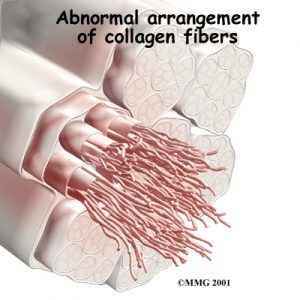
activities over and over again can put too much strain on the elbow tendons. These activities are not necessarily high-level sports competition. Hammering nails, picking up heavy buckets, or pruning shrubs can all cause the pain of tennis elbow.
In an acute injury, the body undergoes an inflammatory response. Special inflammatory cells make their way to the injured tissues to help them heal. Conditions that involve inflammation are indicated by -itis on the end of the word. For example, inflammation in a tendon is called tendonitis. Inflammation around the lateral epicondyle is called lateral epicondylitis.
However, tennis elbow often does not involve inflammation. Rather, the problem is within the cells of the tendon. Doctors call this condition tendonosis. In tendonosis, wear and tear is thought to lead to tissue degeneration. A degenerated tendon usually has an abnormal arrangement of collagen fibers.
Instead of inflammatory cells, the body produces a type of cells called fibroblasts. When this happens, the collagen loses its strength. It becomes fragile and can break or be easily injured. Each time the collagen breaks down, the body responds by forming scar tissue in the tendon. Eventually, the tendon becomes thickened from extra scar tissue.
No one really knows exactly what causes tendonosis. Some doctors think that the forearm tendon develops small tears with too much activity. The tears try to heal, but constant strain and overuse keep re-injuring the tendon. After a while, the tendons stop trying to heal. The scar tissue never has a chance to fully heal, leaving the injured areas weakened and painful.
SymptomsThe main symptom of tennis elbow is tenderness and pain that starts at the lateral epicondyle of the elbow. The pain may spread down the forearm. It may go as far as the back of the middle and ring fingers. The forearm muscles may also feel tight and sore.
The pain usually gets worse when you bend your wrist backward, turn your palm upward, or hold something with a stiff wrist or straightened elbow. Grasping items also makes the pain worse. Just reaching into the refrigerator to get a carton of milk can cause pain. Sometimes the elbow feels stiff and won’t straighten out completely.
Exercise
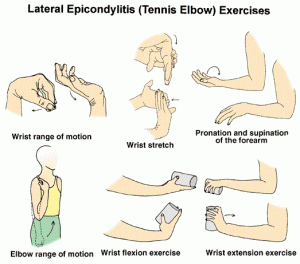
Colgan Osteopath in Kettering Northamptonshire
Call us to see how we can help 07738493974 or book online

